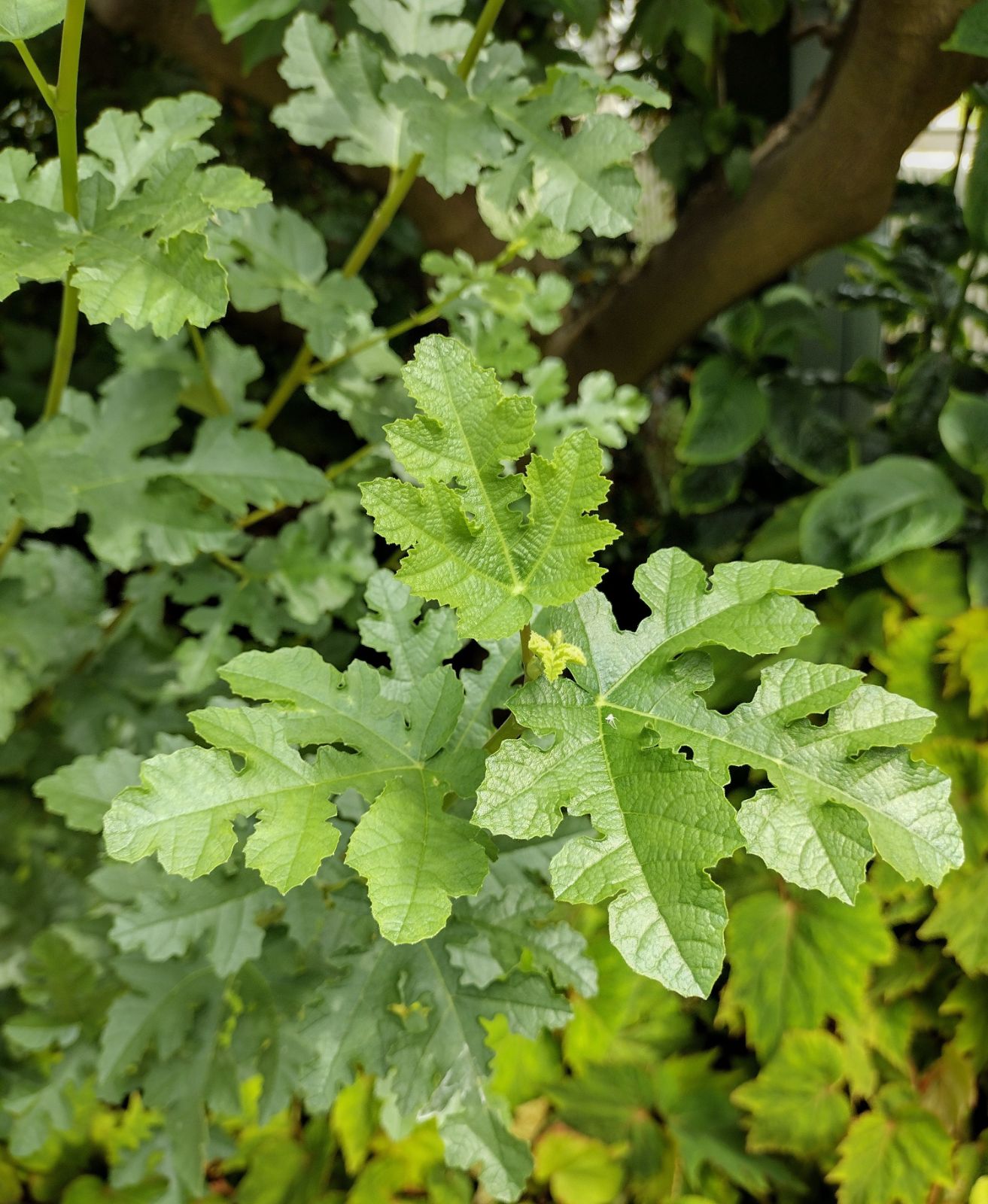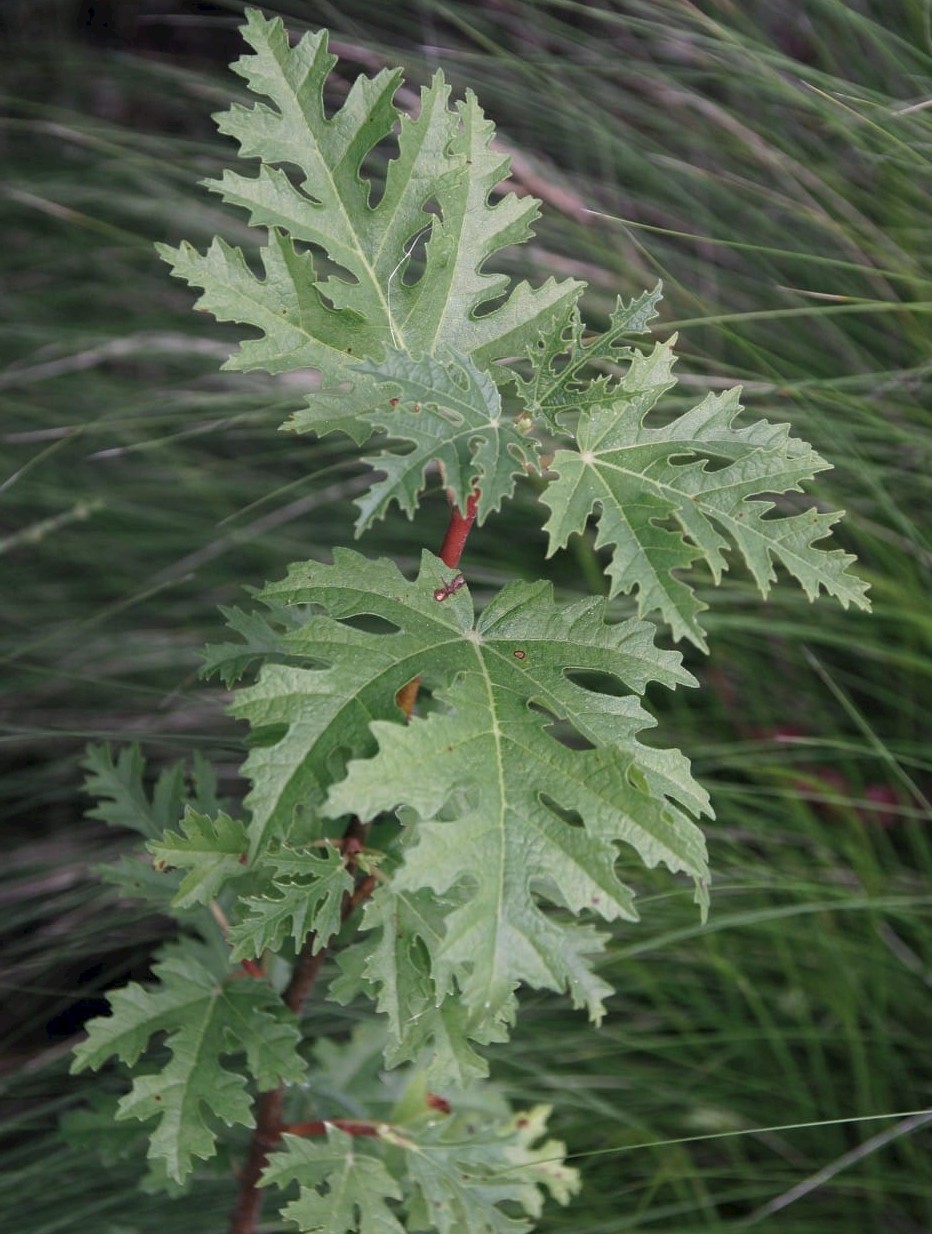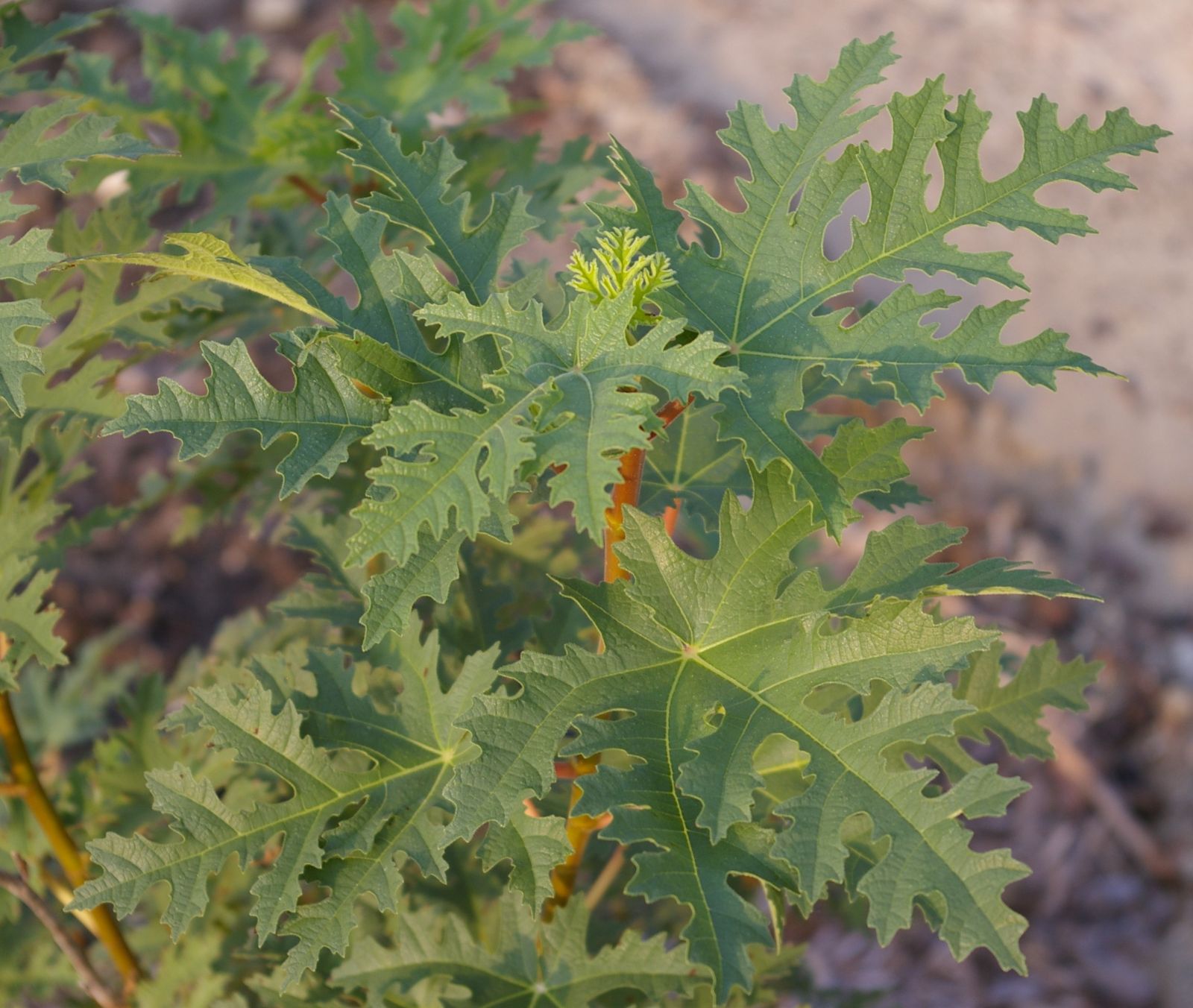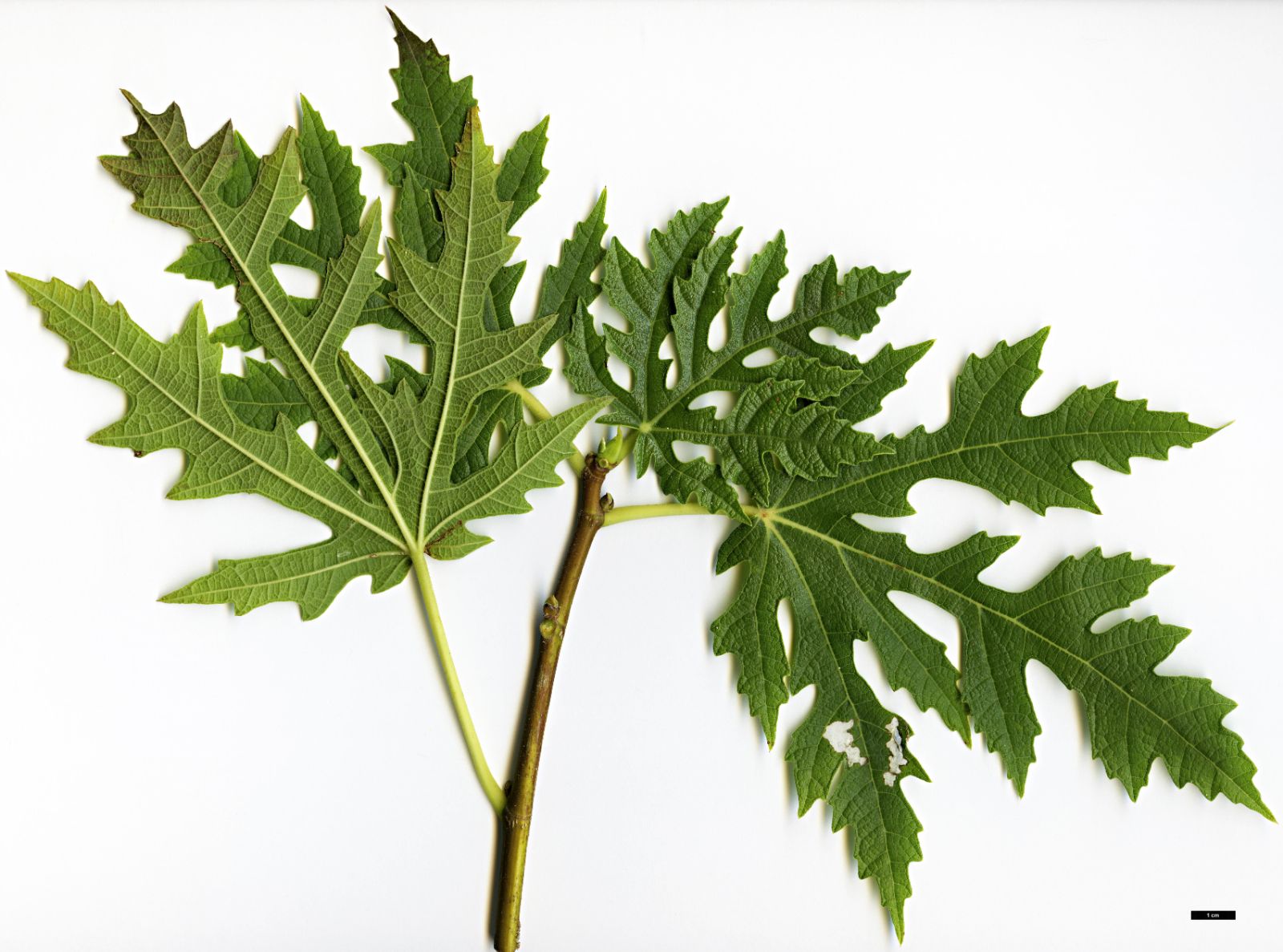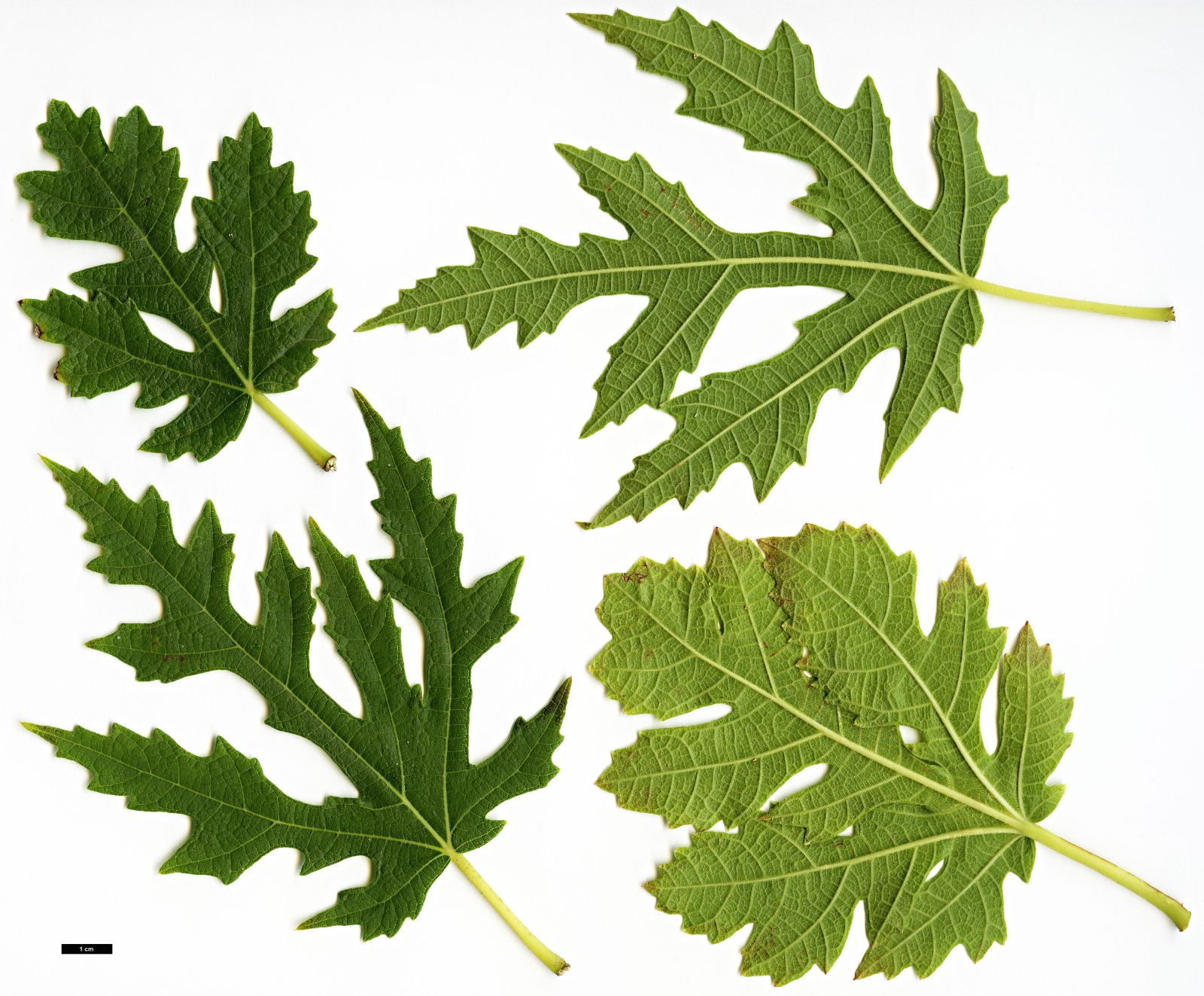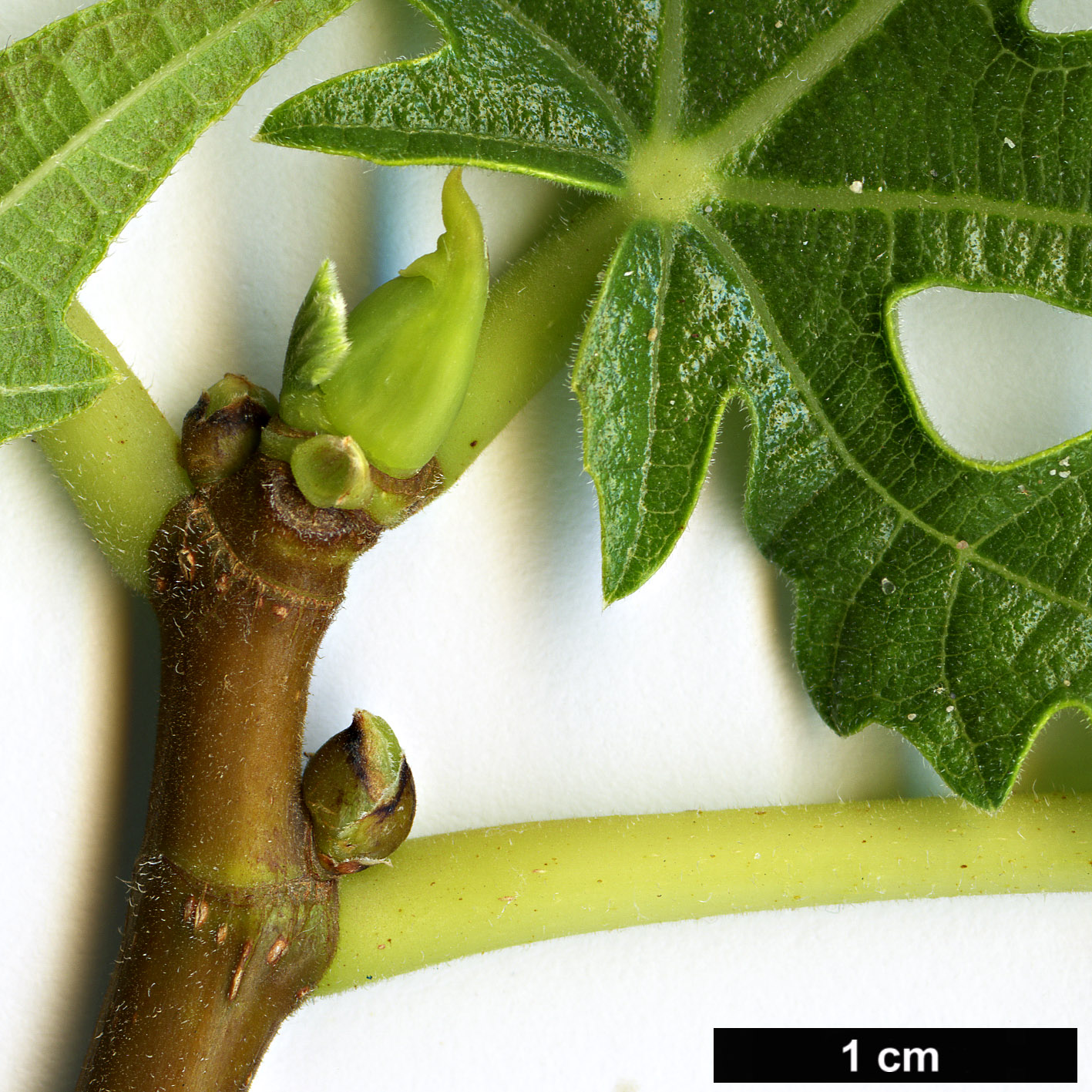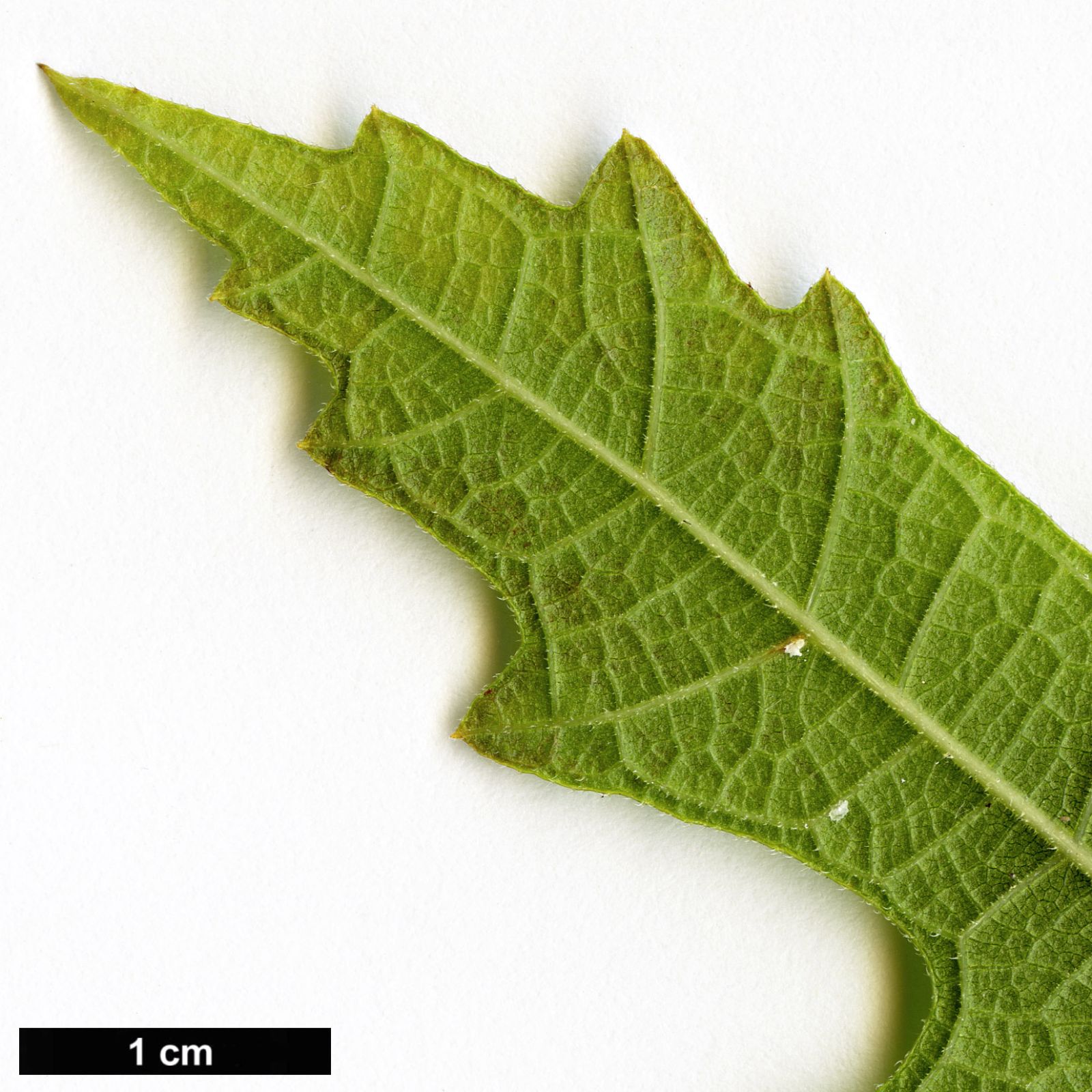Ficus johannis
Credits
Article from New Trees by John Grimshaw & Ross Bayton
Recommended citation
'Ficus johannis' from the website Trees and Shrubs Online (treesandshrubsonline.
Genus
Ficus johannis is principally represented in cultivation by subsp. afghanistanica (see below). Subsp. johannis, which seems to be a smaller, shrubbier plant, is grown outside the Temperate House at Kew (labelled with the synonym F. geraniifolia Miq.), as bushes pruned down to the level of the pediment. It was introduced by Christopher Grey-Wilson in 1966, from the southern Zagros mountains of Iran.
subsp. afghanistanica (Warb.) Browicz
Common Names
Afghan Fig
Synonyms
F. afghanica (Popov) Drobow
F. carica L. var. afghanica Popov
Shrub or tree to 10 m or more (in cultivation this species probably grows much larger than published accounts describing wild plants suggest). Branchlets pubescent to subglabrous. Leaves deciduous, 7–9(–13) cm long, somewhat heart-shaped, three- to five-lobed, reminiscent of a maple leaf, upper surface rough, lower surface with some pubescence, margins distinctly dentate, apex obtuse; petiole to 5 cm long, pubescent or glabrous. Figs edible, 2–3(–3.5) cm long, pyriform; peduncle ~2 cm long. Browicz 1982. Distribution AFGHANISTAN; IRAN; TAJIKISTAN; TURKMENISTAN. Habitat Wooded slopes on sandy loam soils; only recorded from 30–35 m asl, though probably occurs higher. USDA Hardiness Zone 8–9. Conservation status Not evaluated. Illustration NT370, NT372. Taxonomic note Ficus johannis subsp. johannis has smaller leaves and fruits (leaves 1–3(–6) cm long, fruits 1–1.5(–2) cm long). Subsp. afghanistanica may be a cultivated form, but F. johannis, F. carica and F. palmata Forssk. are a confusing group, with several intermediate forms; F. johannis subsp. afghanistanica hybridises with F. carica subsp. carica in the north of its range (Browicz 1982).
Ficus johannis subsp. afghanistanica has entered cultivation by a number of routes. In the United States, rather unconventionally, it arrived at Yucca Do Nursery, Texas as a mysterious packet of seeds from a customer who had obtained them from northern Iran (Yucca Do 2003). From this source, and others in the United States, it has been distributed quite widely, and is proving to be a very satisfactory garden tree. Several selections have been made by Cistus Nursery, Oregon, including ‘Silver Lyre’ which has particularly good foliage. The beauty of this species lies in its elegantly dissected leaves; they would not be suitable for use as a discreet cover for nudity in an emergency, their laciness suggesting something far more seductive. It is certainly a species to look out for and obtain in its best forms, for cultivation in a hot sunny site. In good conditions it has the potential to make a fine tree, rather resembling a big F. carica.

